Formfutura - EasyFil PLA and HDglass - Filament Review
If you're ready to try printing with something other than your basic PLA then maybe it's time for you to try FormFutura's new HDglass PETG and EasyFil PLA.
For a more in depth review, check out the video below:
FormFutura - EasyFil PLA and HDglass - 3D Filament Review
https://youtu.be/FD7_WQHymjY
FormFutura sent me two rolls of their new HDglass and EasyFil PLA filaments to review. With new technology and advancement in production FormFutura has created their own filament that takes the best of all worlds. Clean lines and ease of printing of PLA, strength and bend-ability of ABS, shine and color of PETG.
They have every type of filament you would ever want to print with on their website.
FILAMENT
All of the different types of filament they sell comes in several different colors.
Their metallic bronze filament, it has a color and shine to it, unlike any other filament i've seen.
Super shiny.
I tested two very different types of their filaments with two very different looks and characteristics. Their HDglass is a PETG based filament, which means it has some bend-ability and is very strong. FormFutura's HD Glass is also semi-transparent. This would be perfect form someone wanting to print decorative parts like vases.
The other filament i tested is their EasyFil PLA in bronze color. It's not so much a color as it is a whole texture. It looks very dark and rich with deep contrasts. This is perfect for someone wanting to print very detailed parts, maybe small figures or characters. The PLA will produce incredibly clean and accurate lines.
Another view.
Here's what it looked like when it came in the mail.
Individual packaging of filament.
Here's what it looked like wrapped in an air-tight bag.
Same air-tight wrap for the PLA.
Another shot of the FormFutura boxing.
The box is wrapped and the filament is as well. So it has a double layer of protection. Another cool feature is that there's a window so if you are buying this in the store, you can still see the filament.
Close-up of the side of the box for EasyFil PLA.
Close-up of the side of the box for HDglass PETG.
Information on the back of the boxes.
Close-up of the back.
Same set of info on the PLA.
COMPANY
FormFutura has the more information on their website than any other site i've seen. You can tell that they really know what they are doing. They sell all different kinds of filament and have loads of support and information about them.Their filament product page clearly shows what you are buying and settings for printing.
And here's the page for the EasyFil PLA. You can see some of the information they provide. There's also settings with even more info.
The same is true for HDglass and all of their filament. Extremely thorough.
Some sites don't give any information, meanwhile FormFutura gives extruder temp, bed temp, printing tips, filament specifications and strength properties. They have clearly done some very thorough testing.
From their website to their shipping box to their filament, everything has a feeling of high quality.
TEST PARTS to be PRINTED
I decided to print 4 test parts, each of which will show a different characteristic of the filament:1. Chess Piece - (OVERALL) This is a good overall part to show how the filament will print. It has smooth round lines, slight overhangs, and detailed ridges at the top. If this chess piece prints well in all areas then you can be confident that it will print everything well.
2. Bottle Opener - (STRENGTH) I wanted to print the bottle opener to test the filament's strength in a typical, everyday type of part. See how it reacts to bending, stress, strain, tension, and compression. Whether the printed part will be rigid or deform when a force is applied to it.
3. Carabiner - (DUCTILITY) Similar to the bottle opener, the carabiner needs to be strong in tension, but it also needs to bend. This may be a difficult test for filament like PLA which typically has a rigid characteristic.
4. Yoda - (DETAIL) Both of these parts will really require the printer to be able to print in great detail and need to handle tricky overhangs. The settings for these parts will have to be slowed down to print accurately.
SETTINGS
Since there are two different filaments, there will obviously be two very different types of settings.The following settings i give can be thought of a just a general guideline of where to start. Also i used Cura v15.04.06 because of it's clear and simple settings layout. For filament that is more difficult to print with, a different slicer program may be needed, and more advanced settings may need to be adjusted.
The first thing i do after opening Cura is to import a saved profile for PLA and PETG filament, then drag in the part to be printed. As well as the different filament, the 4 different test prints will also need to have some settings different from each other. The Bottle Opener, which is focused on strength, will need a higher infill percentage but can be printed at a faster speed and higher Z axis. Where as the Chess Piece and Yoda will have little to no infill, but printed slowly for more accuracy.
Here are the settings i used:
Basic Settings
Advanced Settings
HDglass PETG
195-225 which is lower than most PETG, which is usually at 240
no heated bed needed, but i usually need gluestick
EasyFil PLA
210-220 which is higher than most PLA which is usually at 200
no heated bed needed, but recommends 35-60
tips - hairspray or blue tape
Once the gCode is saved and loaded into the printer we are ready to start printing.
PRINTING
For all of these parts i printed directly onto glass with a heated bed and glue stick. This was probably overkill but all the parts had excellent adhesion and did not come loose during printing. You probably don't need to do this, it would work just fine printing onto masking tape, non-heated bed, or hairspray. I just like my process because i know it works on everything and the part won't lift half way through printing.I always pay great attention to the first layer, removing any stray filament, and remove any filament that may clump onto the nozzle.
This was the back side of a lithograph. The PLA printed very smooth on the glass plate.
Here's the Yoda right off the print bed, still needs cleanup of the support structure.
These were some structural parts i printed with the PETG. They are surprisingly strong, even the thin area in the bridge piece.
Both the HDglass and EasyFil PLA flowed very well and had clean lines. The PETG was slightly stringy, but i adjusted the settings to increase the retraction and the stringyness went away.
PARTS
Here's the printed results:REVIEW
Even with the basic beginner printer that i used, all the test parts that i printed came out great. Like i said in the beginning, EasyFil PLA and HDglass PETG are great filaments to try when you are looking for something new, beyond the basic PLA.Both filaments were easy to print with, i had great adhesion with the heated glass plate, and no issues with clogging.
The overall look of the filament was very different. The HDglass had a bright, translucent shine to it. The perfect filament for printing objects like vases with thin outer shell layers. Whereas the EasyFil PLA Bronze had a dark rich look to it, with a very unique appearance. This filament was ideal for small characters or faces where you would like the fine details to pop.
HDglass PETG
34 €
Super bright and shiny, just like the filament on the roll.
This complicated piece printed surprisingly well for a PETG filament. I was expecting some type of sagging at the overhang and some lack of detail at the top, but all areas of the chess piece came out very clean. There was no sagging in the overhang.
This part printed very precise and the arm was quite strong. No flexing or bending and the curved sides were smooth.
The PETG filament is a perfect choice for something like a caribener where it has to be strong and flexible. The bend points showed high flexibility and yet there was good tensile strength in the overall part.
This is the type of part where the HDglass gets to show off a bit. It was very shiny and vibrant in its color and reflection. There were no issues in the overhang areas and a surprisingly high amount of detail was visible in the facial features.
EasyFil PLA
29 €Deep rich color and detail. Unlike any other basic color i've printed with.
The look and feel of this bronze PLA is something's perfect for displaying a 3D printed part. This chess piece would totally work if you were thinking of printing a full set of actual chess pieces.
I did not have any problems with the print, curved areas, overhangs, or detail at the top of the part. As you would expect with PLA it was very crisp in the sharp corners. The EasyFil handled all areas of this intricate part very well.
Although PLA isn't normally intended as a durable material, this part printed quite strong and would totally work with the strength needed for a bottle opener. I had good layer adhesion and there was little flexing in the arm. Again there was no issue with the curved lines and detail of the part.
Predictably this PLA was very rigid with little flex. However there was no issue with cracking or breaking in the flex clips or in the overall part.
I have to admit that this bronze filament surprised me with how well it printed this part. The depth of color, shine, and amount of detail that the EasyFil PLA printed was amazing. There was no comparison between the bronze and any other standard PLA that i have printed with. Instead of just a plain, flat color throughout the part, this bronze color had a look to it unlike anything else. This is really what this filament is intended for. I am very happy with how well this printed this detailed figure.
FINAL SUMMARY
I do have to say that in this case you totally get what you pay for. FormFutura filament is something you want to use when you are printing a part to show off or for a professional part. Ya you can screw around with cheap PETG and PLA for little printed things you don't care about, but when you want it to look perfect, FormFutura is the way to go. So if you are a beginner 3D printer that is looking to take the next step in 3D printing, this is something you should give a try.Lots of companies are touting their new filament as something that will 'Replace PLA', i think FormFutra did just that. There's no comparison between a cheap filament and FormFutura's HDglass and EasyFil Bronze PLA. And considering all the time and money you are putting into printing, you shouldn't skimp and try to save $10 by buying cheap filament. Try a roll of their filament and you will see a big difference in your prints.
If you've ever printed with FormFutura's filament let me know what you think. I bet that you've had the same experience that i've had. And if you haven't tried this filament you definitely should.
Visit FormFutura for a roll of their EasyFil PLA and HDglass filament.













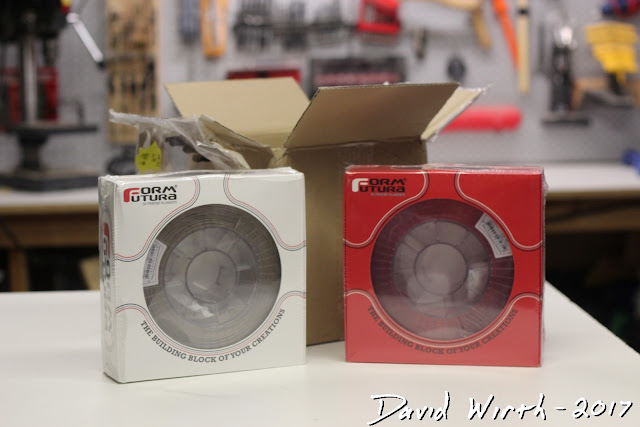


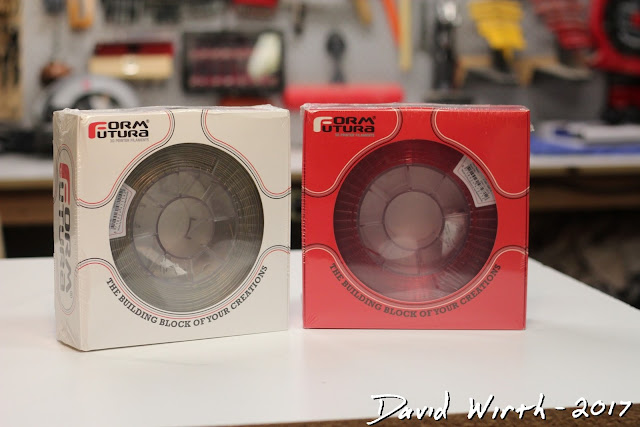





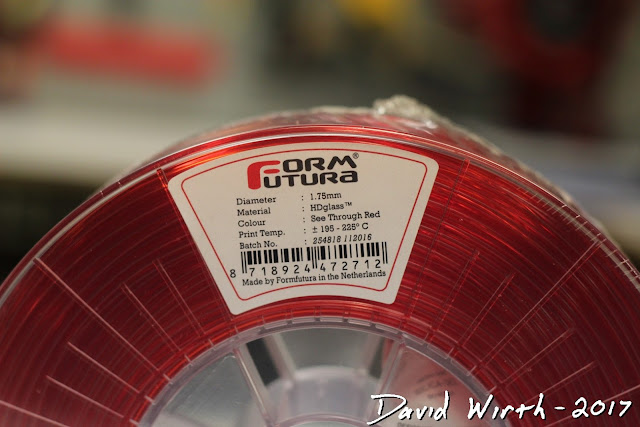

















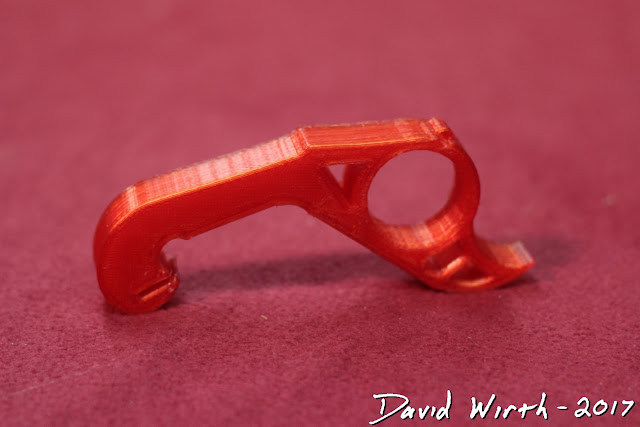





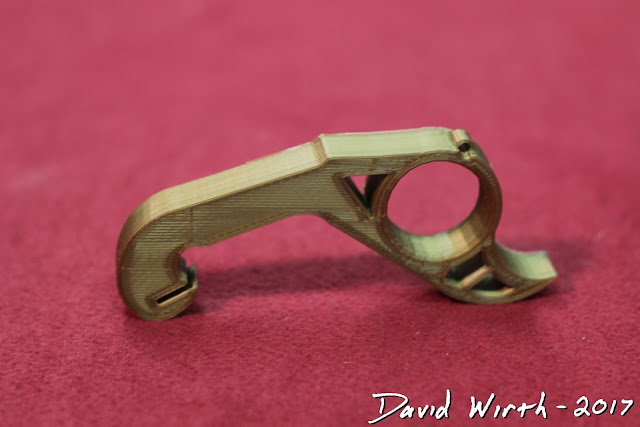



No comments:
Post a Comment